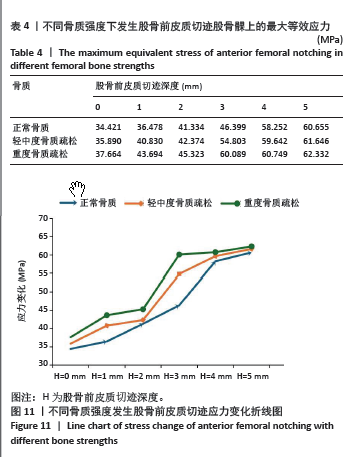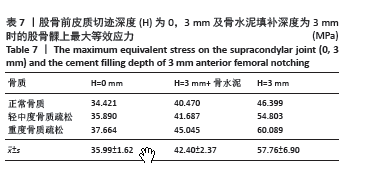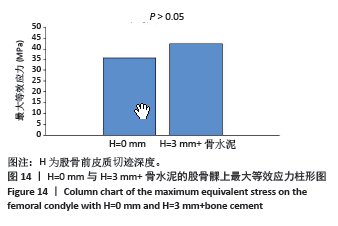[1] WANG JC, PIPLE AS,HILL WJ, et al. Computer-Navigated and Robotic-Assisted Total Knee Arthroplasty: Increasing in Popularity Without Increasing Complications. J Arthroplasty. 2022;37(12):2358-2364.
[2] LOMBARDO DJ, SILJANDER MP, SOBH A, et al. Periprosthetic fractures about total knee arthroplasty. Musculoskelet Surg. 2020;104(2):135-143.
[3] CARON É, GABRION A, EHLINGER M, et al. French society of orthopedic surgery and traumatology (SOFCOT); Complications and failures of non-tumoral hinged total knee arthroplasty in primary and aseptic revision surgery: A review of 290 cases. Orthop Traumatol Surge Res. 2021;107(3):102875.
[4] MA LL, YU XR, WENG XS, et al. Possible Risk Factors for Severe Complications Occurring after Primary Total Knee Arthroplasty. Chin Med Sci J. 2022;37(4):303-308.
[5] DELSMANN MM, SCHMIDT C, MÜHLENFELD M, et al. Prevalence of osteoporosis and osteopenia in elderly patients scheduled for total knee arthroplasty. Arch Orthop Trauma Surg. 2022;142(12):3957-3964.
[6] SKIBICKI HE, PONZIO DY, BRUSTEIN JA, et al. A cautionary case: osteoporotic femur fracture after robotic-assisted total knee arthroplasty. Osteoporos Int . 2021;32(10):2125-2129.
[7] STAMIRIS D, GKEKAS NK, ASTERIADIS K, et al. Anterior femoral notching ≥ 3 mm is associated with increased risk for supracondylar periprosthetic femoral fracture after total knee arthroplasty: a systematic review and meta-analysis. Eur J Orthop Surg Traumatol. 2022;32(3):383-393.
[8] ZHANG JC, ZHANG LS, ZHOU H, et al. Stress distribution patterns during the gait cycle in patients with anterior femoral notching following total knee replacement. BMC Musculoskelet Disord. 2022;23(1):718.
[9] CHATURONG P, AKRAPORN S, PAKPOOM R, et al. Risk factors of early periprosthetic femoral fracture after total knee arthroplasty. BMC Musculoskelet Disord. 2021;22(1):1009.
[10] PURANIK HG, MUKARTIHAL R, PATIL SS, et al. Does Femoral Notching During Total Knee Arthroplasty Influence Periprosthetic Fracture. A Prospective Study. J Arthroplasty. 2019;34(6):1244-1249.
[11] WANG DG, LI Y, YIN HL, et al. Three-dimensional finite element analysis of optimal distribution model of vertebroplasty. Ann Palliat Med. 2020; 9(3):1062-1072.
[12] XIE XJ, CAO SL, TONG K, et al. Three-dimensional finite element analysis with different internal fixation methods through the anterior approach. World J Clin Cases. 2021;9(8):1814-1826.
[13] 李志帅,张红倩,李丽,等.有膝关节有限元分析的研究热点及趋势[J].中国组织工程研究,2022,26(15):2412-2418.
[14] FALCINELLI C, WHYNE C. Image-based finite-element modeling of the human femur. Comput Methods Biomech Biomed Engin. 2020;23(14): 1138-1161.
[15] KANAIZUMI A, SUZUKI D, NAGOYA S, et al. Patient-specific three-dimensional evaluation of interface micromotion in two different short stem designs in cementless total hip arthroplasty: a finite element analysis. J Orthop Surg Res. 2022;17(1):437.
[16] 熊恒恒,聂伟志.三维有限元分析对骨关节和相关软组织损伤时应力状态的精准模拟[J].中国组织工程研究,2022,26(36):5875-5880.
[17] RHO JY, HOBATHO MC, ASHMAN RB. Relations of mechanical properties to density and CT numbers in human bone. Med Eng Phys. 1995;17(5): 347-355.
[18] HOU YJ. Investigation in the dependency of stiffness of cancellous bone on apparent density—based on the combination model of rod-rod structure and perforated plate structure. Sheng Wu Yi Xue Gong Cheng Xue Za Zhi. 2006;23(1):78-81.
[19] JETHANANDANI R, PATWARY MB, SHELLITO AD, et al. Biomechanical consequences of anterior femoral notching in cruciate-retaining versus posterior-stabilized total knee arthroplasty. Am J Orthop. 2016; 45(5):E268.
[20] WIJAYATHUNGA VN, JONES AC, OAKLAND RJ, et al. Development of specimen-specific finite element models of human vertebrae for the analysis of vertebroplasty. Proc Inst Mech Eng H. 2008;222(2):221-228.
[21] COMPLETO A1, SIMÕES JA, FONSECA F. Revision total knee arthroplasty: The influence of femoral stems in load sharing and stability. Knee. 2009; 16(4):275-279.
[22] WU WD, HAN ZH, HU BI, et al. A graphical guide for constructing a finite element model of the cervical spine with digital orthopedic software. Ann Transl Med. 2021;9(2):169.
[23] KAZEMI M, DABIRI Y, LI LP. Recent advances in computational mechanics of the human knee joint.Computational and mathematical methods in medicine. 2013;2013:718423.
[24] KIM JG, KANG KT, WANG JW. Biomechanical Difference between Conventional Transtibial Single-Bundle and Anatomical Transportal Double-Bundle Anterior Cruciate Ligament Reconstruction Using Three-Dimensional Finite Element Model Analysis. J Clin Med. 2021; 10(8):1625.
[25] MEHBOOB H, TARLOCHAN F, MEHBOOB A, et al. Finite element modelling and characterization of 3D cellular microstructures for the design of a cementless biomimetic porous hip stem. Mater Design. 2018;149: 101-112.
[26] ACEVEDO C, SYLVIA M, SCHAIBLE E, et al. Contributions of material properties and structure to increased bone fragility for a given bone mass in the UCD‐T2DM rat model of type 2 diabetes. J Bone Miner Res. 2018;33(6):1066-1075.
[27] GAUTAM A, CALLEJAS MA, ACHARYYA A, et al. Shape-memory-alloy-based smart knee spacer for total knee arthroplasty: 3D CAD modelling and a computational study. Med Eng Phys. 2018;55:43-51.
[28] LI Y, GAO YH, LU D, et al. Analysis of the effect of tibial torsion on tibial osteotomy in knee arthroplasty using a three-dimensional computed tomography-based modelling technique. BMC Musculoskelet Disord . 2019;20(1):361.
[29] PHILIPPE M, SARA C, INES K, et al. Physiological joint line total knee arthroplasty designs are especially sensitive to rotational placement – A finite element analysis. Plos One. 2018;13(2):e0192225.
[30] JEFFREY NK, KAETLYN RA, RICHARD FL. Diagnosis and Treatment of Hip and Knee Osteoarthritis: A Review. JAMA. 2021;325(6):568-578.
[31] BRYAN SB, JEREMIAH JM, SAMUEL FT, et al. Complication Rates in Total Knee Arthroplasty Performed for Osteoarthritis and Post-Traumatic Arthritis: A Comparison Study. J Arthroplasty. 2020;35(2):371-374.
[32] ZALZAL P, BACKSTEIN D, GROSS AE, et al. Notching of the anterior femoral cortex during total knee arthroplasty characteristics that increase local stresses. J Arthroplasty. 2006;21:737-743.
[33] CULP RW, SCHMIDT RG, HANKS G, et al. Supracondylar fracture of the femur following prosthetic knee arthroplasty. Clin Orthop Relat Res. 1987;(222):212-222.
[34] HOENIG T, KATHRYN EA, BELINDA RB, et al. Bone stress injuries. Nature reviews. Dis Primers. 2022;8(1):26.
[35] CEN HP, JIA YM, WU XG, et al. Effects of the microcrack’s shape, size and direction on the poroelasticbehaviors of a single osteon: a finite element study. Acta Bioeng Biomech. 2016;18(1):3-10.
[36] STOCKLEY I, MCAULEY JP, GROSS AE. Allograft reconstruction in total knee arthroplasty. Bone Joint J. 1992;74(3):393-397.
[37] RAND JA. Bone deficiency in total knee arthroplasty. Use of metal wedge augmentation. Clin Orthop Relat Res. 1991;271(271):63.
[38] RÖHNER E, HEINECKE M, MATZIOLIS G. Bone defect management in revision knee arthroplasty. Der Orthopade. 2021;50(12):1004-1010.
[39] AGGARWAL AK, BABURAJ V. Managing bone defects in primary total knee arthroplasty: options and current trends. Musculoskelet Surg. 2021;105(1):31-38.
[40] ZOHRE Z, MAJEDEH N, MAJID N, et al. Effect of Cement Type and Cementation Technique on the Retention of Implant-Supported Restorations. J Long Term Eff Med Implants. 2020;30(1):61-67.
[41] AJAY K, RAJESH G. Fracture Toughness of Acrylic PMMA Bone Cement: A Mini-Review. Indian J Orthop. 2021;55(5):1208-1214.
|






